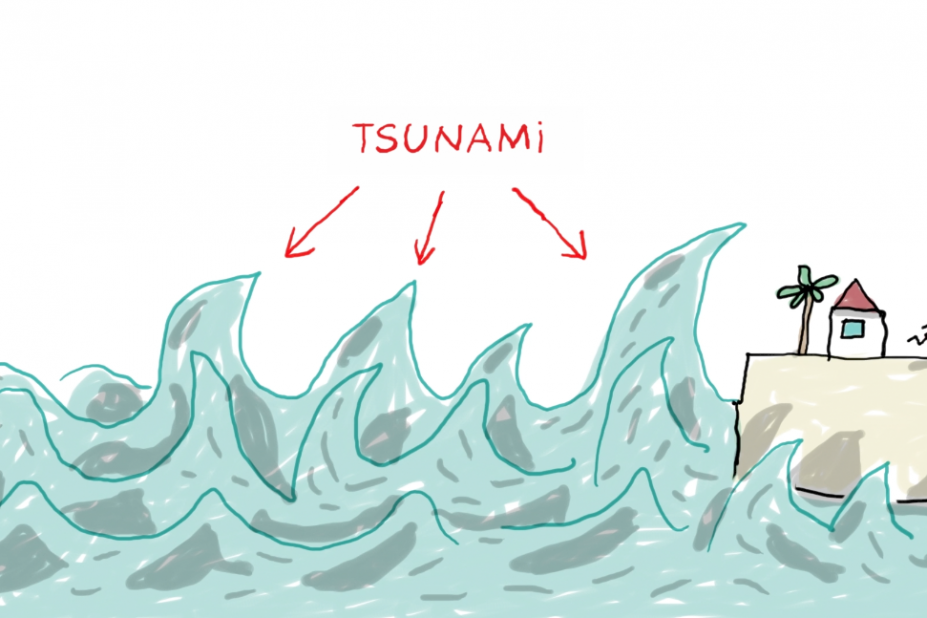A tsunami is a series of gigantic waves that crash down onto the shore.
It is most often triggered by an earthquake under the sea.
It can also be caused by a volcanic eruption or by a landslide in the ocean.
How does a tsunami form?
When the tectonic plates of an ocean or continent hit each other, the ocean bed is deformed and lifts up an enormous mass of water.
Concentric waves are formed, like you when you throw a stone in water.
Out at sea, the waves are no higher than 3 feet but move as fast as a plane.
When they get near the coast, they are slowed down by the lack of depth. So they contract and get bigger.
30 to 90 foot high walls of water crash onto the coast, destroying everything in their path and flooding the land.





 Retour
Retour